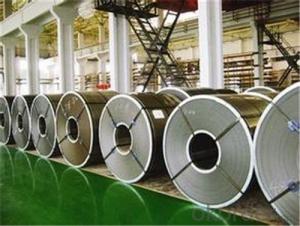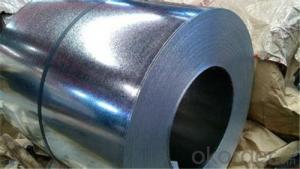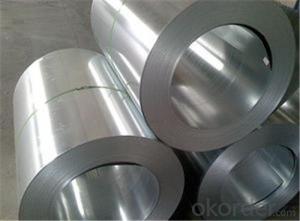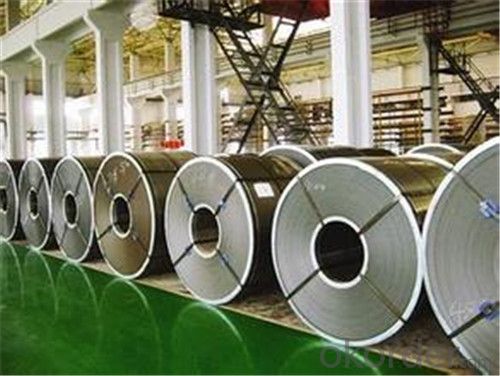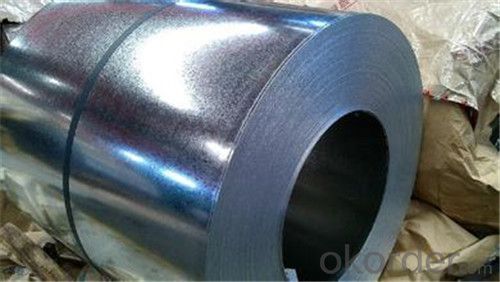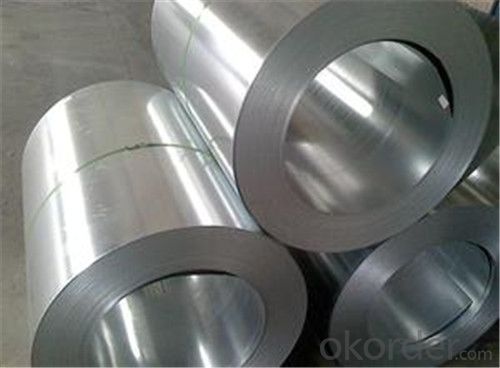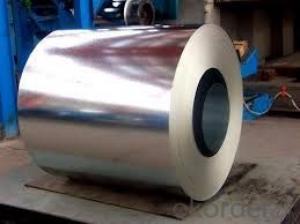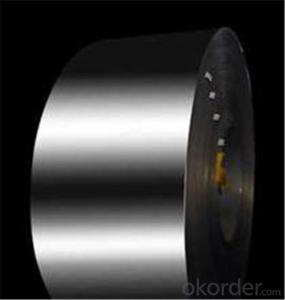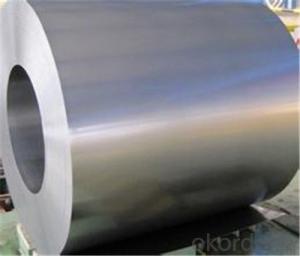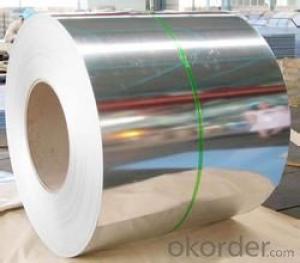Hot Galvanized/ Auzinc Steel -SPCC in China from CNBM
- Loading Port:
- Tianjin
- Payment Terms:
- TT OR LC
- Min Order Qty:
- 150 m.t.
- Supply Capability:
- 5000000 m.t./month
OKorder Service Pledge
OKorder Financial Service
You Might Also Like
Description:
Hot-dip aluzinc steel sheet is substrated on cold rolled steel (CRC) in various strength and specification. Coating composition is 55% aluminum in weight ratio, 43.4% zinc, and 1.5% silicon, with excellent corrosion and heat resistance performance.
Specifications:
1.Mateials:SGCC,DX51D / DX52D /S250,280GD
2.Size:width:600-1250mm(900mm,1215mm,1250mm,1000mm the most common)
thickness:0.15-2.0mm
length:1000-6000mm,as your require
3.Zinc coating :60-180g( as required)
4.Coil id:508mm
5.Coil weight: 3-5MT(as required)
6. Surface:regular/mini/zero spangle, chromated, skin pass, dry etc.
Applications:
Galvalume Coil widely used for roofing products, It is also the ideal base material for Prepainted Steel Coil.
1. roofing
2. gutters
3. unexposed automotive parts
4. appliances
5. furniture
6. outdoor cabinetry
Images:
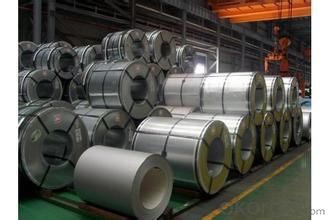
Production of cold formed corrugated sheets and profiles for roofing, cladding, decking, tiles, sandwich walls, rainwater protective systems, air conditioning duct as well as electrical appliances and engineering.
FAQ
1.What's your MOQ?
50MT, it is for one container.
2.Whether your company have QC teams?
Yeah, sure, our QC team is very important, they will keep the quality control for our products.
3. What's your normal delivery time?
Our delivery time about 10-20days for standard sizes, if you have other requirements like hardness and width ,it is about 20-40days. But don't worry ,we also try our best for the
- Q: im buying a new guitar,, it has a built in tuner and its semi acoustic (can be plugged into an amplifier) ,, im trying to choose which strings are better ,, steel or nylon..?
- i have steel and i like the way it sounds but i like nylon better
- Q: were iron age weapons made of steel?
- Even in very early iron, a small amount of steel was produced by carburization, where the iron picks up carbon by laying in hot coals before quenching. This produces a thin layer of steel on the surface of the iron. By about 300 BC Damascus steel was being produced by the crucible method on the Indian subcontinent, and the Romans used steel from Noricum. In the first century BC the Chinese were melting cast iron and wrought iron together to make steel.
- Q: What products can we make with steel (eg Steel strip, rod, bar, rail, tube) How are these made? What can we make from these steel products?Can you please make the answers as detailed as possible you can because i really want to know this really well. Thank you.
- Your okorder (they make steel deck and steel joists) There are thousands of other items routinely produced from steel, including rebar, and all the metal in cars, airplanes, and about a million other things.
- Q: I'm a Hobbyist and want to Build my own axial-flow jet engine,can I use steel as the Turbine blades instead of Titanium which I can't get easily?? What about the other parts I can use for...?!
- You can use steel but alloyed with a big percent of Mn and Cr. Titanium is very good but unfortunately it is expensive. On engines and Turbine blades it is indicate to use High Alloy metals that are resistant to fluage.
- Q: Can steel coils be coated with holographic patterns?
- Yes, steel coils can be coated with holographic patterns. This coating process involves applying a thin layer of holographic material onto the surface of the steel coils, creating a visually striking and distinctive holographic pattern.
- Q: How are steel coils used in the production of packaging materials?
- Steel coils are used in the production of packaging materials by being processed into thin sheets or strips that can be shaped and formed into containers, cans, or other packaging components. These steel sheets are often used as a base material for packaging products due to their strength, durability, and ability to protect goods during transportation and storage.
- Q: But we've had a problem with bears being attracted to the water in the Intex Inflatable pools, the bear would come at night every so often and push on the sides letting out the water.Would a bear be able to bend a steel frame before I go and spend money?
- depends on the steel thickness and positioning. frm your question I'm guessing you're not really well versed in steel framing or use... im guessing whatever you build, a bear can destroy. if i was to build it not even 100 bears can destroy it. it doesn't require much steel, it's just about bracing the positing of steel and some design.
- Q: What are the different grades of steel used in coil production?
- There are several grades of steel used in coil production, including low carbon steel, high carbon steel, stainless steel, and galvanized steel. Each grade has its own unique properties and is chosen based on the specific requirements of the coil application.
- Q: What are the different methods of edge camber correction for steel coils?
- Edge camber correction in steel coils can be achieved through several methods, depending on specific requirements and available equipment. Some commonly used methods include the following: 1. Mechanical tools, such as shears or slitters, are utilized for trimming the edges of the coil. This removes excess material and corrects the camber. Mechanical edge trimming is suitable for smaller coils or minimal camber. 2. Tension leveling involves passing the coil through adjustable rollers while applying tension. This elongates the steel and reduces camber. It is effective for moderate camber and commonly used for larger coils. 3. Roller leveling, similar to tension leveling, employs fixed rollers to exert pressure on the steel and flatten it. This method is preferable for thicker and heavier coils. 4. Heat straightening utilizes controlled heat to soften the edges of the coil. Once the steel becomes malleable, external force is applied to straighten the edges. Heat straightening is suitable for severe edge camber but requires specialized equipment and expertise. 5. Combination methods may be employed by combining different techniques. For instance, mechanical edge trimming may be followed by tension leveling or roller leveling to further straighten the edges. It is important to note that the choice of method depends on factors such as camber severity, coil dimensions, material properties, and available equipment. Evaluating these factors and consulting with experts is essential to determine the most suitable method for edge camber correction in steel coils.
- Q: How are steel coils used in the production of structural steel?
- Steel coils are used in the production of structural steel by being unwound and processed through various manufacturing techniques, such as rolling and shaping, to create different structural components like beams, columns, and plates.
Send your message to us
Hot Galvanized/ Auzinc Steel -SPCC in China from CNBM
- Loading Port:
- Tianjin
- Payment Terms:
- TT OR LC
- Min Order Qty:
- 150 m.t.
- Supply Capability:
- 5000000 m.t./month
OKorder Service Pledge
OKorder Financial Service
Similar products
Hot products
Hot Searches
Related keywords
